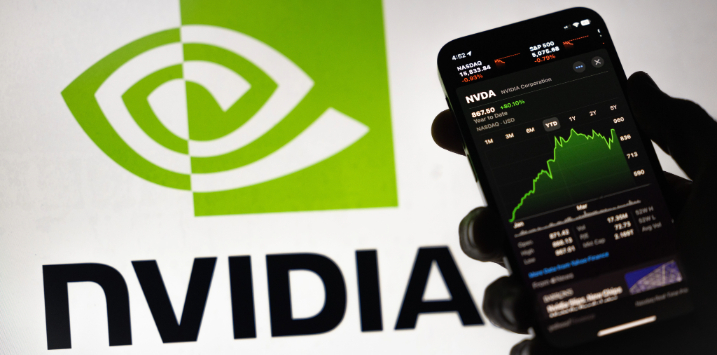
NVIDIA Q3 Fiscal 2026 Earnings
NVIDIA delivered another blowout quarter (Q3 2025 – ended 26 October, 2025 – released 19 November, 2025), significantly beating Wall Street expectations, and for some, partially alleviating (perhaps only temporarily) concerns about an artificial intelligence (AI) bubble. Demand for AI infrastructure remains extremely strong, with the new Blackwell graphic processing unit (GPU) architecture powering Nvidia’s latest high-performance chips for AI and Data Centres ramping faster than anticipated.
Table 1. Key financial highlights ($US)
|
Metric |
Q3 FY2026 |
QoQ Change |
YoY Change |
vs. Expectations |
|
Revenue |
$57.0 billion |
+22 per cent |
+62 per cent |
Beat (~$54.9B expected) |
|
Data Centre Revenue |
$51.2 billion |
+25 per cent |
+66 per cent |
Core driver of growth |
|
Net Income |
$31.91 billion |
– |
+65 per cent |
– |
|
GAAP EPS |
$1.30 |
– |
+67 per cent (from $0.78) |
Beat ($1.26 expected) |
|
Non-GAAP Gross Margin |
~73-74 per cent (in line or slight miss on costs) |
– |
– |
Minor soft spot due to mix/rising inputs |
The Data Centre segment (primarily AI chips like Hopper and now Blackwell) accounted for approximately 90 per cent of total revenue. It reflected NVIDIA’s near-monopoly in training and inference for large-scale AI models.
Other segments, such as Gaming, grew 30 per cent year-on-year (YoY), while Professional Visualisation grew 56 per cent YoY.
For Q4 2026 the company is implying continued acceleration in sequential growth and guiding revenue of approximately US$65 billion, which is above current consensus of US$61-62 billion.
While very few companies can afford to spend billions for an order of graphic processing units (GPUs) with an uncertain outcome, those that can are.
Commentary highlights
CEO Jensen Huang emphasised that demand and early production/shipments of the new Blackwell (GB300/B200) GPUs were “off the charts” and far exceeded internal plans. This represents a meaningful positive shift, remembering that previous quarters suffered from supply constraints. Today, the company says Blackwell is scaling rapidly and already contributing meaningfully.
CFO Colette Kress confirmed the company remains on track (and likely exceeding) the previously disclosed ~half-trillion dollars in orders for Blackwell and next-gen Rubin chips covering calendar 2025-2026 combined. She noted, “The number will grow.”
Keeping in mind you should never ask a barber whether you need a haircut, Huang directly addressed market fears of an AI bubble, stating the AI transformation is real and accelerating, with NVIDIA foundational across every phase (training, inference, robotics, quantum, etc.). He highlighted the massive gigawatt-scale AI factories being built by Meta, Microsoft, Google, Oracle, xAI, etc.
The result included no material H20 (China-compliant) chip sales – a consequence of the impact from trade tensions between the U.S. and China.
While revenue grew sequentially by US$10 billion to US$57 billion, receivables rose to US$33.4 billion for the quarter, up US$5.7 billion from the prior quarter.
Market reaction
NVDA Nasdaq stock rose five per cent in the four hours of ‘after hours’ trading to 8 pm in New York. That helped lift broader indices in Asia, with Japan’s Nikkei up 2.98 per cent at the time of writing, Taiwan up 3.2 per cent, and Korea’s KOSPI Index up three per cent. Here in Australia, the market rose 1.2 per cent amid easing pressure tied to AI spending slowdown fears.
NVIDIA continues its remarkable AI-driven growth, with graphic processing unit (GPU) sales increasing. There are no signs of slowdown – in fact, growth is accelerating again due to Blackwell’s strength and excellent outlook. This was one of the clearest “beat-and-raise” reports in recent quarters, reaffirming the company’s position as the main beneficiary of the global AI capital expenditure (capex) boom.